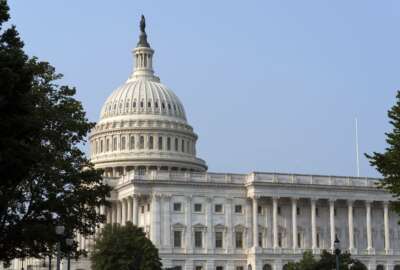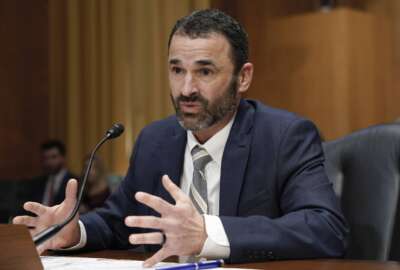Hubbard Radio Washington DC, LLC. All rights reserved. This website is not intended for users located within the European Economic Area.
On Air: Federal News Network
Trending:
Shutdown: It ain’t over when it’s over
Reopening the government isn't going to be just like flipping on a switch. he repercussions of the shutdown will be felt for a long time to come.
Commentary by Jeff Neal
Founder of ChiefHRO.com
& Senior Vice President, ICF International

This column was originally published on Jeff Neal’s blog, ChiefHRO.com, and was republished here with permission from the author.
With a few hopeful signs of movement on the budget/shutdown/debt ceiling/ front, I am hearing people talking about how quickly the shutdown can be turned off and everyone can get back to work. As I have written before, some folks have the mistaken idea that the shutdown is like a toggle switch — just flip it off and everything will come back on. It is true that most employees can be brought back quickly. Agencies will contact employees via phone, email, radio, television and their websites to get their employees back on the job. If it ended today, almost all federal employees could be back at work tomorrow. That should be the end of the shutdown story, right?
I wish that were true, but it is not. The repercussions of the shutdown will be felt for a long time to come. Here are just a few examples of how:
- Year-end spending. Members of Congress and administration officials always lament the annual “year-end spending spree” that occurs in many agencies. The year-end spending is driven by the fear of losing money if it is not obligated by the end of the fiscal year. The problem is far worse now than it was in the past because Congress is not passing appropriations bills on time. All 12 of the appropriations bills are supposed to be passed by Oct. 1. That hasn’t happened in years. For fiscal 2014, we are likely to end up with a continuing resolution that funds the government at sequestration levels until January. Congress is supposed to pass full-year appropriations by then. Once the budget — most likely an omnibus appropriations bill or another continuing resolution — has passed, agencies will have to sort through their appropriations and then distribute the money to their component parts. That could easily take another month or two. Agencies may not have a clear understanding of where they stand until March 2014. The uncertainty will make another year-end spending exercise almost unavoidable.
- Combined Federal Campaign (CFC). Since its creation by President Kennedy in 1961, CFC has raised more than $7 billion for charities. CFC supports local, national and global causes and is one of the most successful fundraising campaigns ever. CFC contributions peaked $282.6 million in 2009 and have dropped each year since. Last year, CFC raised more than $258 million. The 2013 campaign, beginning on Sept. 1, had hoped to raise that much or more. The decreasing CFC contributions, driven in part by the pay freeze and fed-bashing, are being felt by the charities that rely on CFC contributions. The 2013 campaign in DoD was suspended due to the shutdown. Other agencies have done the same. Although the campaigns will resume when the shutdown ends, no one expects to see a massive outpouring of contributions from people who just got sent home without pay for a few weeks. Many smaller local organizations rely heavily on CFC and their programs and the people they serve are likely to suffer as a result.
- Training. Many large-scale training programs in the government are run by centers/academies that have fully booked calendars. The time they have lost due to sequester can never be restored. For example, the Homeland Security’s Federal Law Enforcement Training Center (FLETC) runs highly regarded law enforcement training programs that are used by much of the federal government. Many law enforcement professionals consider FLETC to be the “gold standard” for training. DHS shutdown planning guidance indicated only 61 of FLETC’s 1074 employees would be exempt from the shutdown. That means training operations come to a halt. Students in residence at FLETC are returned to their homes and their training has to be rescheduled. Given the demand for FLETC training and the reduction in capacity caused by losing two to three weeks on the calendar, it is likely crucial training classes will be deferred for weeks or months. The loss of capacity and additional cost of transportation are casualties of the shutdown.
- Recruiting. The federal government, like any other employer, experiences significant amounts of turnover every year. Even with the budget shrinking and numbers of federal employees dropping, data from OPM’s Fedscope reporting tool show the government is likely to hire almost 200,000 new employees in Fiscal 2014, just to replace people who are leaving. That number is a significant drop from the more than 309,000 in Fiscal 2009. Recruiting for federal jobs has been hard enough in the past few years, with potential hires routinely asking why they should go to work for a government that has not granted a general pay raise in four years. Shutdown politics are another strike against the federal government as an employer. Supporters of big government and small government alike agree that, whatever its size, the government should have talented employees.
- Retention. The pay disruption, stress and uncertainty the shutdown caused will most likely push more employees out of government. While there is a lot of attention paid to how it might affect those who are at or near retirement age, the potential effects on younger employees should not be ignored. Study after study tells us millennials do not expect to stay with an employer for an entire career. Combine that with the portability of the Thrift Savings Plan and the pay issues and it is reasonable to conclude younger employees will be likely to leave government in larger numbers. Losing highly experienced older workers and the up- and-comers who are the future of the federal workforce is a one-two punch that will have lasting effects on the government’s ability to have the right people for the job.
- Contracts. Many businesses that have federal contracts have received “stop work” notices from contracting officers. They have to wait for another “start work” notice to be able to start work again. The disruption in work will directly affect schedules and will result in increased costs for the government.
- Morale. Jack Moore has a great piece on Federal News Radio about the effects of the shutdown on morale. Nothing about the shutdown is motivating to federal workers. Given all of the research on the effects of morale and engagement on productivity and other key workplace measures, we should expect to see the shutdown dragging the workforce down for months or even years.
- Scientific Research. The National Institutes of Health furloughed most of their employees. New clinical trials are not starting and new patients are not being accepted. Fhose with life-threatening illnesses are not getting care that may prolong or save their lives. Science Magazine has a new piece showing more lasting effects of the shutdown on research.
- Housing. Bloomberg has an excellent piece outlining the effects of the shutdown on the housing market. The effects are driven by shutdown-driven delays in mortgage approvals.
- Adding to Backlogs. The shutdown stopped work in many agencies that already have backlogs of cases awaiting review and approval. The delays caused during the shutdown will extend far beyond because many cases are added to the pile awaiting review. Not only are those already in the queue being delayed, new cases will face a much longer queue.
- Cost. Backpay for employees idled by the shutdown (800,000 employees off work for a week – 400,000 for another eight days, at a cost of $79,000 per employee) will exceed $2 billion. Agencies will not be given extra dollars to pay for it. It will come out of budgets that have already been squeezed by sequestration. Even in today’s inflated dollars, $2 billion is still folding money. The effects of losing that $2 billion will be felt by countless programs.
These are but a few examples of how shutdown damage will linger far beyond the day federal employees go back to work. Every agency in government will have its own collection of shutdown after effects. It may be months or years (or never) before the true cost and effects are known.
Copyright 2013 by Jeff Neal. All rights reserved.
Jeff Neal is founder of the blog, ChiefHRO.com, and a senior vice president for ICF International, where he leads the Organizational Research, Learning and Performance practice. Before coming to ICF, Neal was the chief human capital officer at the Department of Homeland Security and the chief human resources officer at the Defense Logistics Agency.
RELATED STORIES:
Latest government shutdown news
Copyright © 2024 Federal News Network. All rights reserved. This website is not intended for users located within the European Economic Area.





